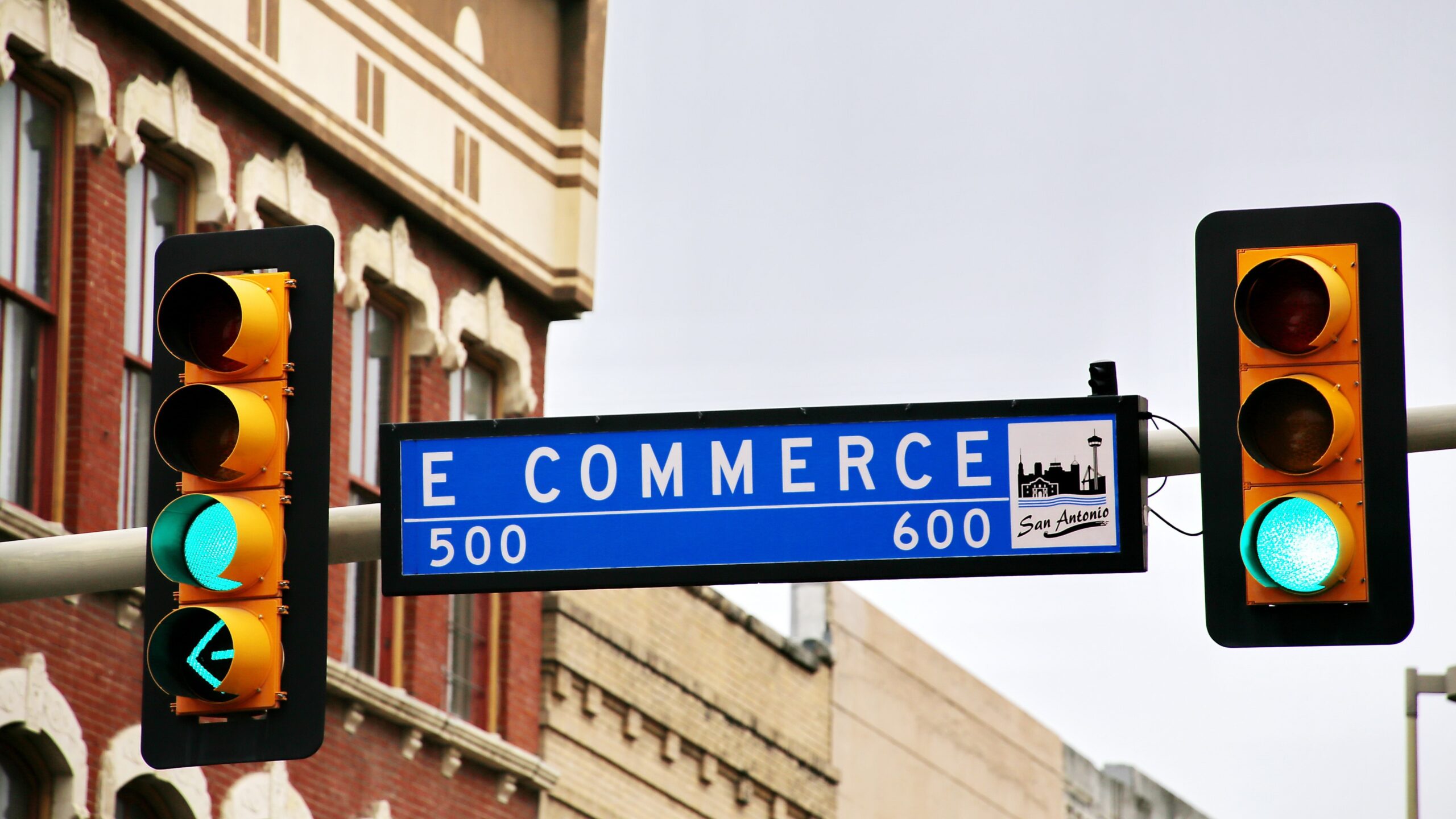As the size of the global ecommerce market continues to grow – according to Statista it will reach $ 6.54 trillion by 2023 – and so will the number of companies operating in this profitable space. Although it is difficult to determine the exact figures, there are at least 12 million worldwide ecommerce stores. This is excellent news for online shoppers, as more options mean they retain freedom of choice. However, this situation poses a few headaches for companies, one of which is solving the problems of building ecommerce stores that stand out from the competition. Several architectures have been proposed and introduced, but currently composable commerce appears to be the most exciting and future-proof option for ecommerce in 2023 and beyond.
WHAT IS COMPOSABLE COMMERCE?
Composable commerce is a modern approach to designing ecommerce systems where various commerce components from different sources are selected and combined into one custom application that best fits the needs of the business. Introduced by Gartner in 2020, it is a term that encompasses the strategy emphasizing modularity, flexibility and scalability, all of which promote the construction of a truly and fully customized ecommerce store. A Gartner report predicts that by 2023, 80% of the ecommerce platforms will have transitioned to a composable architecture. In contrast, less than 5% used this architecture in 2020, proving that this approach is rapidly gaining momentum and is likely the future of ecommerce.
To fully understand composable commerce, let's look at the typical structure of a ecommerce store. It includes the front-end, which is the customer-facing aspect through which the user interacts, and the back-end, which controls the overall functionality of the system. For context, front-end services include user interface components and content management systems, while back-end services include inventory and order management, payment processing services, analytics, and reporting. In the traditional monolithic architecture, a single vendor provides both front-end and back-end services to businesses. This is what ecommerce build stores with experiences like Shopify and Magento. However, composable architecture breaks such a monopoly by introducing a new structure.
Implementing composable commerce means that ecommerce businesses can turn to different vendors to provide all the different services needed to keep the website running efficiently. For example, one solution can be used for processing payments and a completely different one for creating and managing content. While one supplier handles the search functionality, another is responsible for order management. These composable components can then be easily integrated using APIs. Essentially, it's about taking different solutions from different vendors and packaging them into one ecommerce store.
COMPOSABLE COMMERCE VS THE ALTERNATIVES: WHAT MAKES THE DIFFERENCE?
Although it may seem complex, the structure of composable commerce is actually quite simple. Composable architecture consists of PBCs and APIs. According to Gartner, Packaged Business Capabilities, known simply as PBCs, are software components that represent a well-defined business capability. These packaged business capabilities are aggregations of microservices that provide specific functions that can be integrated into a ecommerce platform to enhance its capabilities. Examples include payment processing services, inventory management, shipping and fulfillment services, and content management systems. On the other hand, APIs are the connectors through which these various PBCs communicate for smooth operation.
COMPOSABLE COMMERCE VERSUS TRADITIONAL TRADE
The composable architecture is in stark contrast to the monolithic architecture. In the traditional architecture, there is no decoupling of the front-end and back-end services. Instead, both co-exist as one rigid structure packaged and maintained by a single supplier. Inventory tracking, checkout, ecommerce subscriptions and other services are all managed by the same solution. While traditional trading may seem obsolete, it is still well suited to new and small businesses that lack the resources to manage a more elaborate structure.
COMPOSABLE COMMERCE VS HEADLESS ARCHITECTURE
Many people consider composable and headless architectures as interchangeable, but the difference between the two is clear. Headless architecture is a decoupling architecture that isolates the front-end from the back-end and connects them together via APIs. Unlike composable architecture, where the back-end is split into PBCs, the entire back-end structure remains the same. This is because headless commerce mostly deals with front-end customization. This allows multiple front-ends – for the website, mobile apps, smartwatches, etc. – to be connected to one back-end. This also means that a single vendor can still serve the entire platform, as opposed to the composable architecture that typically consists of multiple solutions.
If it seems like there's an overlap between the two architectures, it's because there really is. This is because composable commerce is built around a set of principles that MACH architecture is called. MACH architecture stands for Microservices, API-first, Cloud-native and Headless architecture. It emphasizes building ecommerce platforms using independent and interoperable components (microservices), using APIs as the primary means of communication between these components (API-first), deploying applications in the cloud (cloud-native) and separating the front end (headless) from the back. Therefore, headless architecture is only a small step towards a composable structure.
WHAT ARE THE BENEFITS OF COMPOSABLE COMMERCE?
In a report from Accenture, 81% of the ecommerce leaders said they plan to use a composable architecture for their next ecommerce project. The shift to composable commerce is accelerating rapidly, which clearly shows how beneficial it is for companies to implement it.
Here are five ways composable architecture can benefit your ecommerce store:
COST EFFICIENT
Composable commerce is a cost-effective strategy for two main reasons. First, because the modular nature of the architecture allows for the interchangeability of the components, companies are free to choose which services to mix and match. Therefore, brands only have to pay for features they use, ensuring they get value for money at all times. Second, composable components are designed to be reusable, meaning companies can use the same components for multiple projects. This makes it unnecessary to pay for the same services every time the company wants to build a new platform.
INDEPENDENCE OF SELLERS
By using composable commerce, a company is no longer completely dependent on one supplier. Using a composable approach, companies can mix and match pre-built components from multiple vendors to create a custom ecommerce system. In addition to being cost-effective, supplier independence gives companies full control over their pace of innovation. Ecommerce stores do not have to wait for their suppliers to upgrade their systems before receiving new updates; they can easily disable the component they need to upgrade without affecting back-end functionality. This independence also reduces the risk of being left without support or options if a vendor goes bankrupt, experiences significant downtime, or stops supporting a particular product or a particular service.
SCALABILITY
As a ecommerce store begins to experience an exponential increase in customer numbers, the needs and requirements will grow at a similar rate. Therefore, the company will need to scale up to maintain a competitive advantage. With a monolithic structure, the ability to scale efficiently is lost. However, composable commerce provides the flexibility a company needs to adapt its services to growing demand without the constraints of any particular supplier.
RESPOND FASTER TO MARKET QUESTIONS
Ecommerce is a fast-moving field where trends move at a breakneck pace. If brands are to remain truly competitive, it is imperative that they have the flexibility to adapt quickly. Composable offers that adaptability by ensuring a faster time-to-market for new features and services. In an Accenture study, 44% of respondents said composable architecture allowed them to launch new features in weeks or days, compared to months with traditional monolithic architecture. Therefore, ecommerce stores running on composable architecture can respond quickly to market trends and differentiate themselves from the competition.
BETTER CUSTOMER EXPERIENCE
With a configurable architecture, your brand can customize not only the look, but also the experience delivered to customers. Composable commerce allows companies to build the exact PBCs that fit their vision of the perfect ecommerce system. This allows them to treat their customers to a truly unique experience. According to Forrester Research, composable commerce platforms can improve the customer experience by providing more personalized and relevant experiences, resulting in an increase in customer satisfaction with 10-30%. This will inevitably lead to more customer loyalty, higher customer lifetime value and more sales.
In short, composable commerce is definitely a strategy worth the excitement it generates. It is still in its infancy, but the available data and insights already suggest that composable architecture is the way forward for ecommerce. By breaking down ecommerce systems into constituent components, companies can create highly customized platforms tailored to their specific needs that can evolve and adapt over time. Therefore, ecommerce brands should start preparing to fully implement this architecture in the near future.













